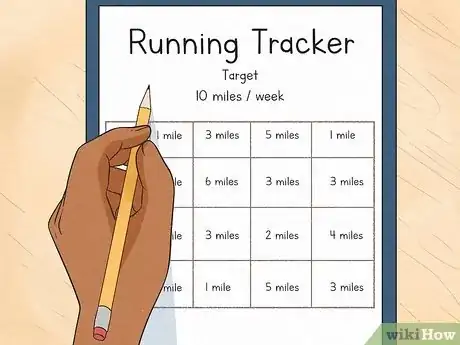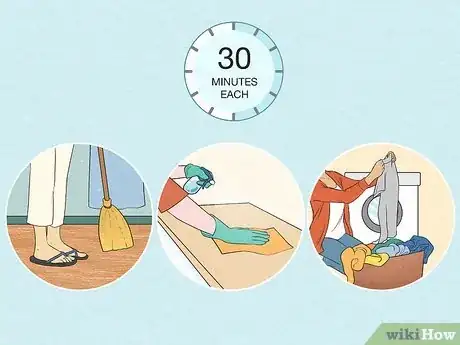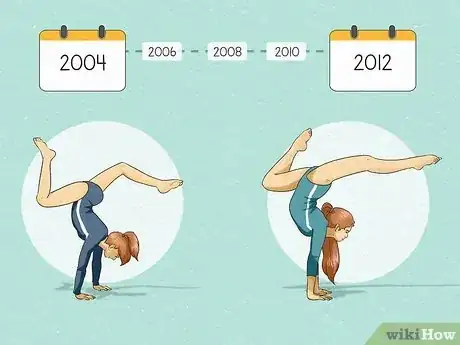This article was co-authored by Rachel Clissold and by wikiHow staff writer, Dan Hickey. Rachel Clissold is a Life Coach and Consultant in Sydney, Australia. With over six years of coaching experience and over 17 years of corporate training, Rachel specializes in helping business leaders move through internal roadblocks, gain more freedom and clarity, and optimize their company’s efficiency and productivity. Rachel uses a wide range of techniques including coaching, intuitive guidance, neuro-linguistic programming, and holistic biohacking to help clients overcome fear, break through limitations, and bring their epic visions to life. Rachel is an acclaimed Reiki Master Practitioner, Qualified practitioner in NLP, EFT, Hypnosis & Past Life Regression. She has created events with up to 500 people around Australia, United Kingdom, Bali, and Costa Rica.
There are 10 references cited in this article, which can be found at the bottom of the page.
This article has been viewed 20,020 times.
Flow is a state of mind where you’re fully energized and immersed in an activity that brings you joy or fulfillment. Many people find flow by accident, but it's possible to get there intentionally too. You’re most likely to reach flow when you’re working on a meaningful task under the right conditions, and finding the flow state is a skill that can be practiced and perfected. We’ve put together a psychology-backed list of ways to enter the flow state, including how to choose a flow-friendly activity and what you can do to practice getting there. If you’re ready to go with the flow, keep scrolling!
Things You Should Know
- Approach your work from an angle that you love. It's easier to reach a flow state when you're tapped into intrinsic motivation.
- Find a sweet spot between feeling challenged while still feeling like the task before you is achievable.
- Create a situation that is conducive to focus. Stay committed to one task at a time and eliminate external distractions.
- Build your abilities over time. The ability to sustain a flow state is like a muscle—it needs to be exercised consistently over time to grow.
Steps
References
- ↑ https://cognitiontoday.com/the-flow-state-positive-psychology-insights-autotelic-personality/#How_do_you_achieve_flow
- ↑ https://greatergood.berkeley.edu/article/item/nine_steps_to_achieving_flow_in_your_work
- ↑ https://www.goalcast.com/flow-state/
- ↑ https://news.yale.edu/2022/04/26/yale-researchers-have-formula-getting-flow
- ↑ https://greatergood.berkeley.edu/article/item/nine_steps_to_achieving_flow_in_your_work
- ↑ https://www.goalcast.com/flow-state/
- ↑ https://cognitiontoday.com/the-flow-state-positive-psychology-insights-autotelic-personality/#How_do_you_achieve_flow
- ↑ https://www.goalcast.com/flow-state/
- ↑ https://www.psychologytoday.com/us/blog/radical-sabbatical/202001/how-stay-focused-and-achieve-what-you-want
- ↑ https://www.inc.com/nate-klemp/harvard-psychologists-reveal-real-reason-were-all-so-distracted.html
- ↑ https://www.inc.com/justin-bariso/the-5-step-method-to-achieving-flow-courtesy-the-golden-state-warriors-klay-thom.html
- ↑ https://www.psychologytoday.com/us/blog/radical-sabbatical/202001/how-stay-focused-and-achieve-what-you-want
- ↑ https://ideas.ted.com/the-key-to-productivity-is-tapping-into-your-flow-state-heres-how/
- ↑ https://greatergood.berkeley.edu/article/item/nine_steps_to_achieving_flow_in_your_work
- ↑ https://www.goalcast.com/flow-state/
- ↑ https://www.urmc.rochester.edu/behavioral-health-partners/bhp-blog/april-2018/5-4-3-2-1-coping-technique-for-anxiety.aspx
- ↑ https://greatergood.berkeley.edu/article/item/nine_steps_to_achieving_flow_in_your_work
- ↑ https://ideas.ted.com/the-key-to-productivity-is-tapping-into-your-flow-state-heres-how/
- ↑ https://ideas.ted.com/the-key-to-productivity-is-tapping-into-your-flow-state-heres-how/
- ↑ https://www.goalcast.com/flow-state/
- ↑ https://www.psychologytoday.com/us/basics/flow








































































